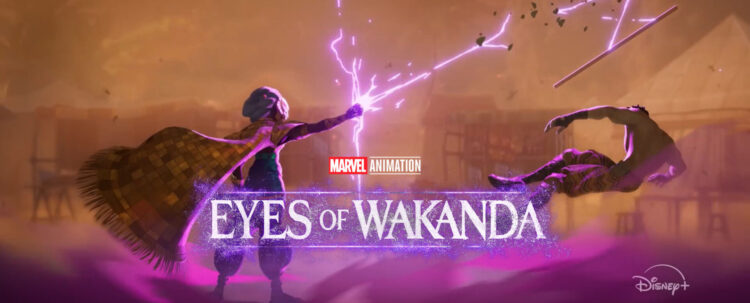In ‘Eyes of Wakanda’, the Black Panther legacy is reframed, not through thrones or power struggles, but through globe-trotting quests across centuries. The four-episode animated series adds new depth to Black Panther lore and the broader Marvel Cinematic Universe. And these aren’t typical superhero stories; they’re time-spanning retrieval missions tied to vibranium, Wakanda’s most precious resource.
Each episode showcases a different character, a different timeline, and a different threat. But the central mission remains the same: vibranium must be brought back to Wakanda, no matter where it has ended up in the world.
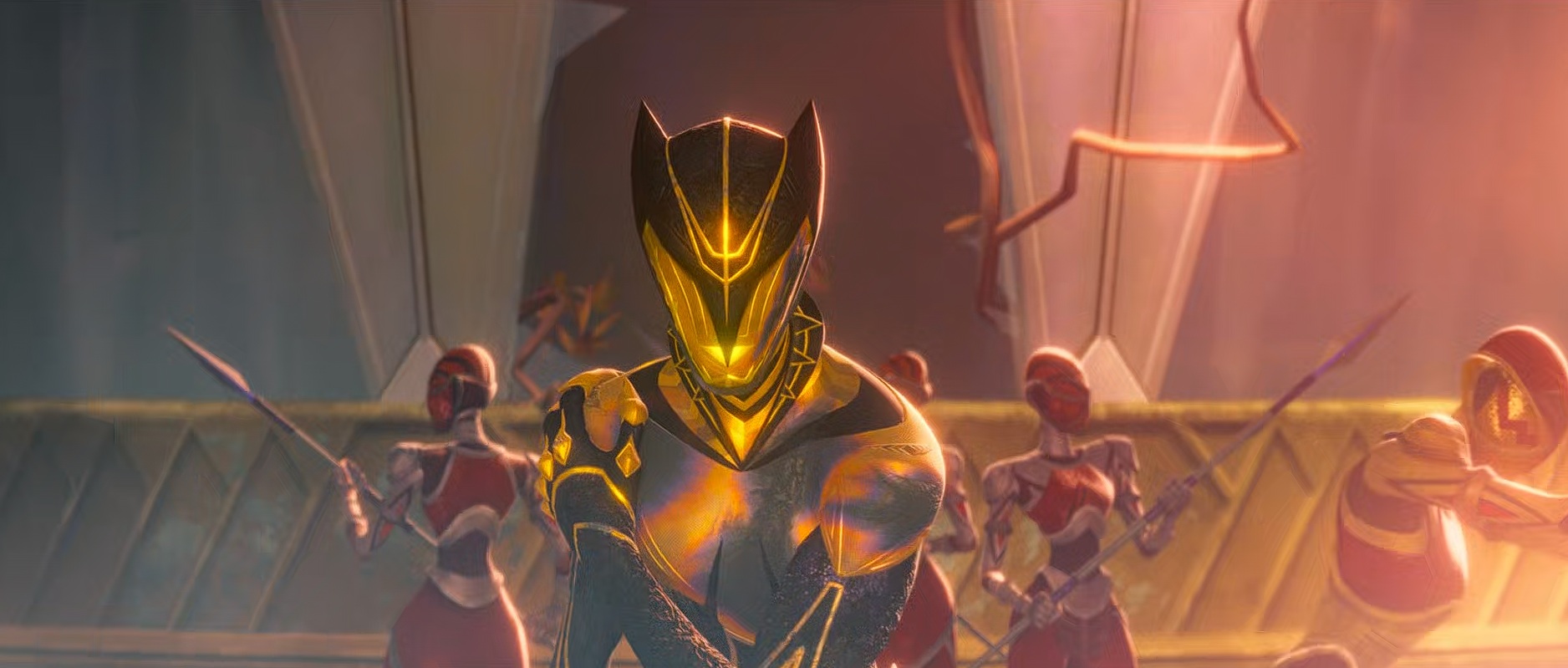
So, let’s dive into what this series entails and how it strengthens the legacies of the characters within the main Black Panther lore that we know so far.
Episode 1: “Into The Lion’s Den”
The first tale of ‘Eyes of Wakanda’ opens in 1260 BC, on the sun-bleached shores of Crete, where raiders bearing advanced weaponry storm a coastal settlement. At their helm stands a towering figure in a lion mask: Nkati, once a revered captain of the Wakandan Royal Guard, now a self-proclaimed monarch who has stolen vibranium technology and built his brutal empire. To those who stood before him, he was no exile. He was The Lion, and he had no king above him.
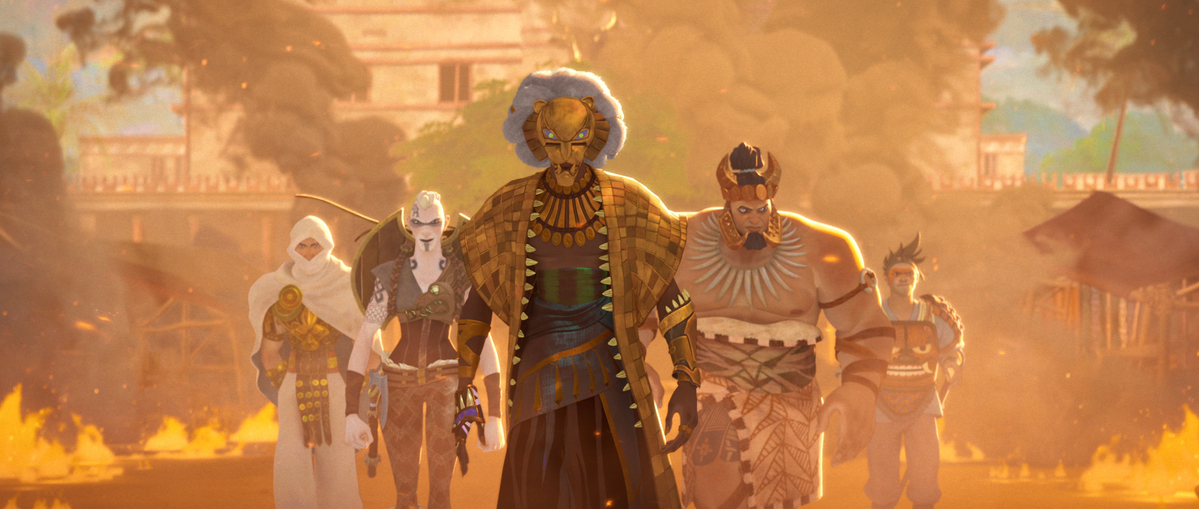
As his raiders burn the city, civilians are rounded up and forced into a cruel ultimatum: join The Lion’s reign, or suffer. There’s hardly a choice. Those who resist are marked, literally branded. However, one of the captives is not what she appears to be.
Noni, a disgraced former Dora Milaje, has been tasked with doing what no one else can: tracking and eliminating the former captain. She was expelled from the Dora not for failure, but for refusal: she had rejected the unity of her squad, and the guards cast her out. Still, Noni was unmatched in skill. And now, she’s the only operative left who might outmatch Nkati because the others he trained never returned.
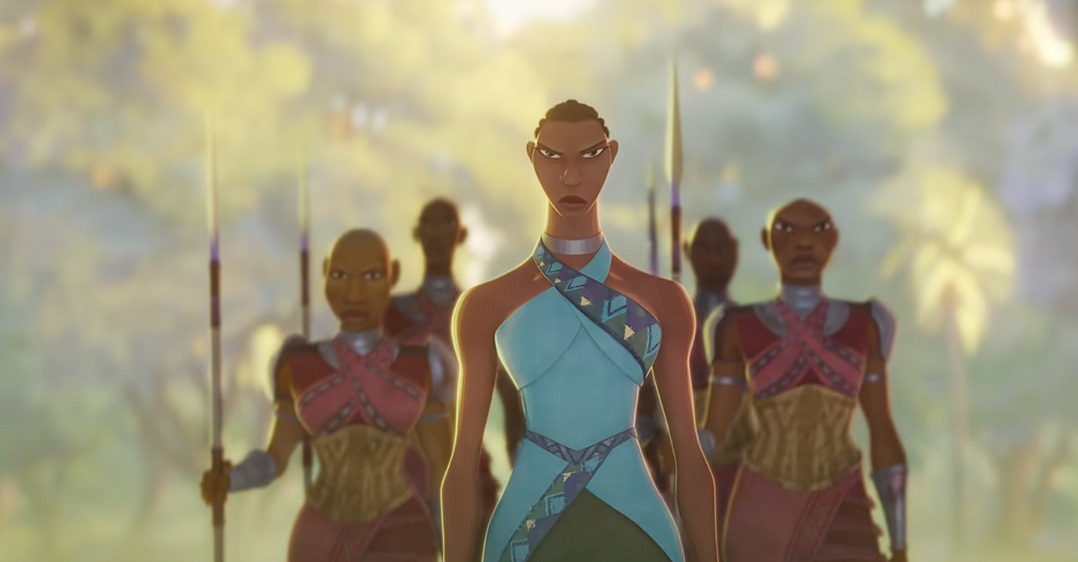
After staging a breakout and slipping into the ranks of the raiders, Noni exposes herself during a moment of civilian cruelty, unable to stand by as a woman is brutalised. She strikes, drawing the attention of three of The Lion’s elite guards. What follows is a brutal showcase of her power and precision. One by one, she takes them down.
Her path finally leads her to Nkati himself, and what begins as a tense standoff quickly descends into a philosophical clash. Noni tells him Wakanda needs him to come home. Nkati mocks the idea. He is home, in the chaos he’s created. To him, Wakanda is a gilded cage. Out here, he’s free.
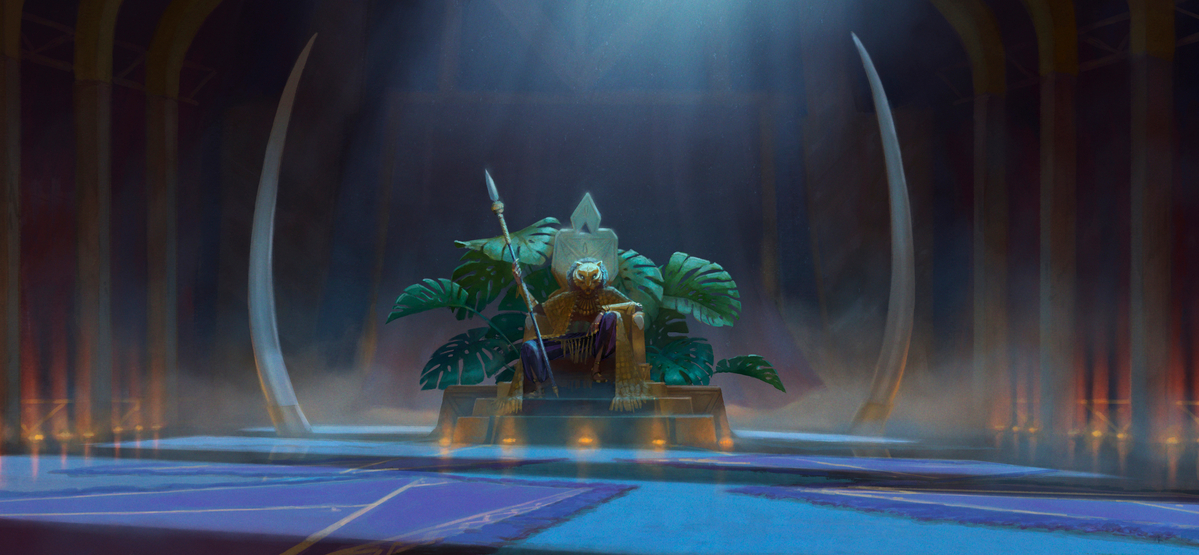
He appeals to Noni’s sense of rebellion, insisting she, too, is no obedient soldier. He warns her that Wakanda doesn’t value people like them. It uses them and sends them to die. But Noni has seen through his version of freedom. “You build your kingdom on chains,” she replies.
They fight. The battle is explosive. Vibranium colliding with vibranium, blades singing. Noni is slashed across the eye, but she holds her ground. Nkati is eventually mortally wounded. Still defiant, he vows they’ll both be forgotten and triggers a bomb from his vibranium-laced throne.
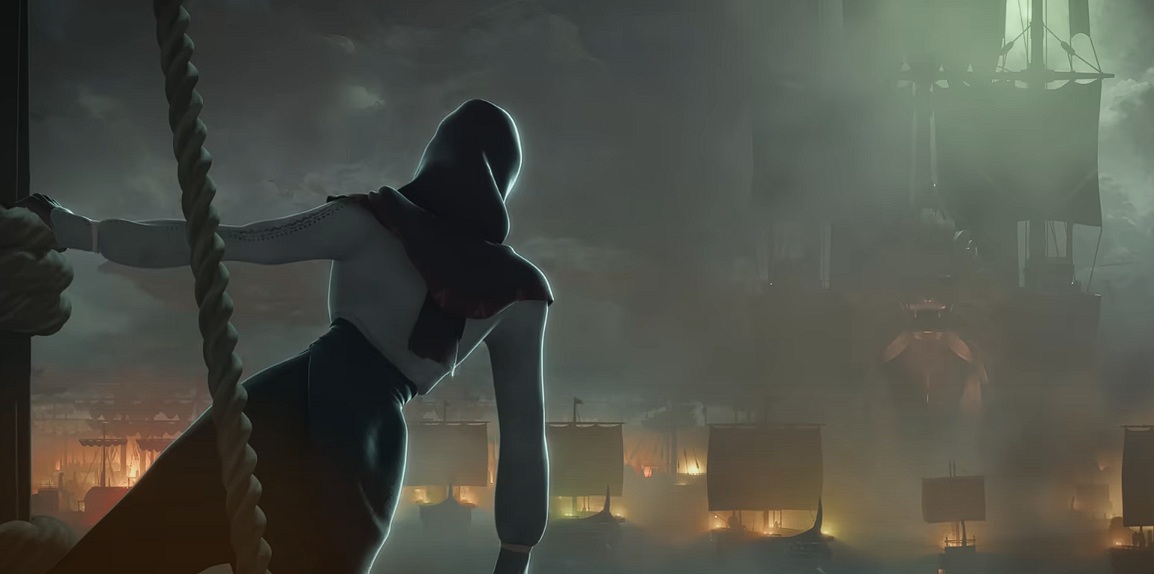
But Noni survives. She dives into the sea as the Lion’s ship crumbles and sinks, taking his twisted empire with it.
Back in Wakanda, Noni is offered reinstatement as a Dora Milaje. She declines. “I can’t walk a path set for me,” she says. The general smiles. “Then walk one only you can choose.” She is offered a new role: War Dog. Unbound, but loyal. Observant, but dangerous. Her real journey begins now as she sets out to retrieve more of Wakanda’s riches from the world.
Episode 2: “Legends and Lies”
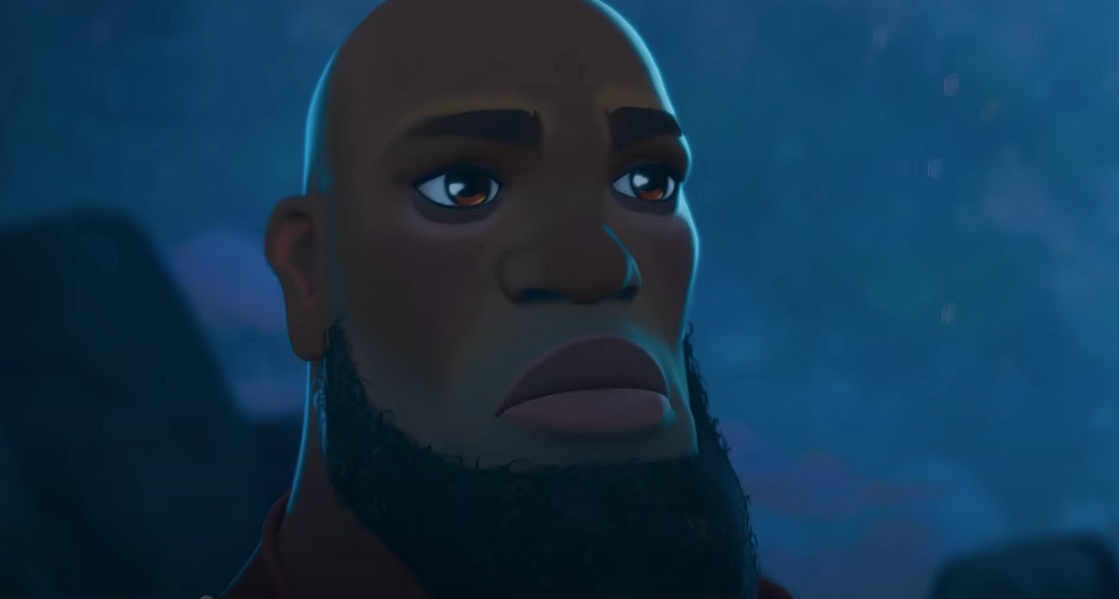
Set against the crumbling walls of ancient Troy, the second chapter of ‘Eyes of Wakanda’ weaves war, brotherhood, and betrayal into one of history’s most storied conflicts. At the heart of it all stands Memnon, known to the world as Agamemnon, but in truth, a Wakandan War Dog embedded deep within the Achaean ranks. His mission isn’t conquest, but recovery. It’s an artefact laced with vibranium, hidden inside the city.
As Achilles leads a furious charge on Troy’s gates, Memnon fights by his side. When an arrow flies toward Achilles, Memnon dives into its path, taking the hit. Though wounded on his palm, he urges a retreat. Achilles, fuming, obeys. The respect between them runs deep.

That night, in a rare lull between battles, the two share quiet reflections. Memnon recounts his journey of how the Achaeans welcomed a wanderer and gave him purpose. He jokes that he’ll be the one to place coins over Achilles’ eyes when his time comes. Their bond feels unbreakable.
But doubt creeps in. Myrmidon soldiers whisper accusations of betrayal, pointing to moments in past campaigns that felt like sabotage. Achilles silences them, defending the man who pulled countless soldiers from the jaws of death. To him, Memnon is a brother.
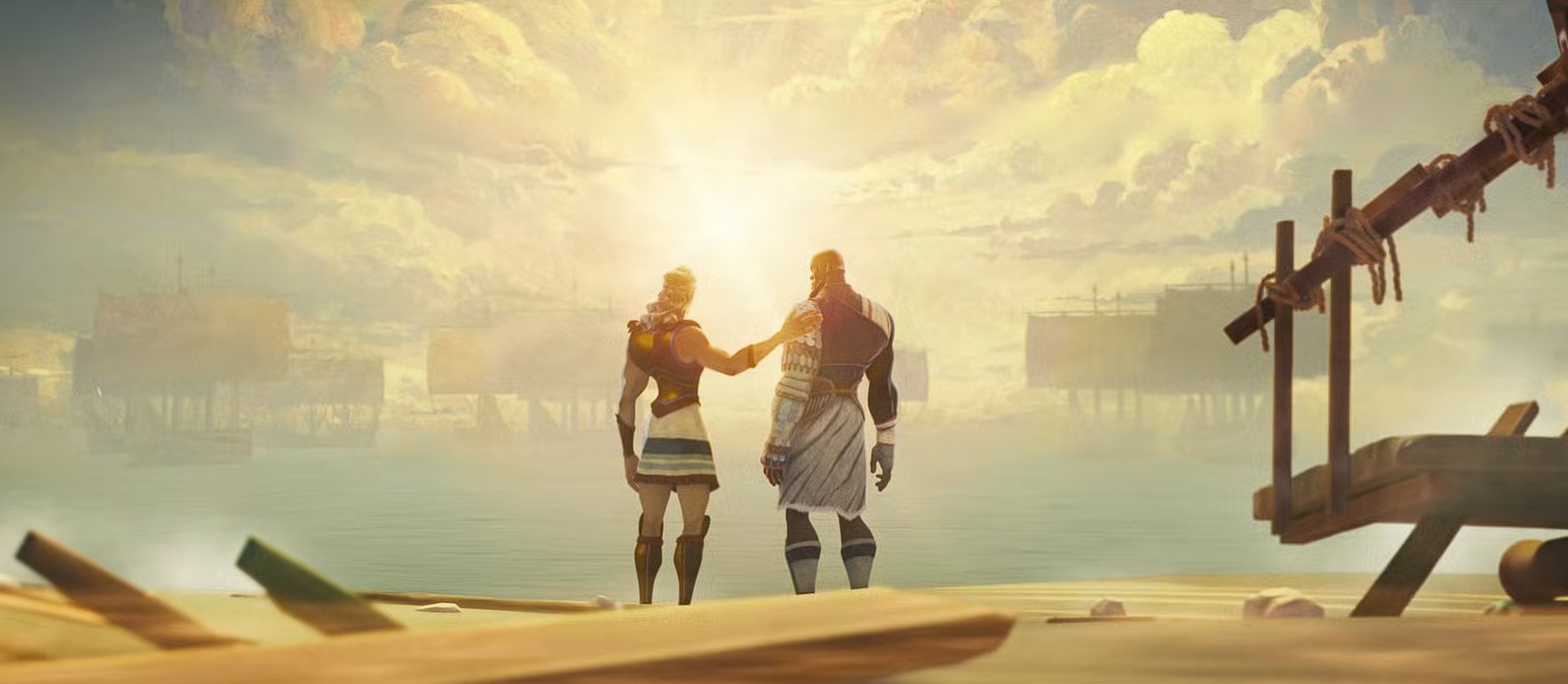
Then Odysseus unveils his infamous plan. It’s the Trojan Horse. Memnon plays his part, hiding inside the wooden structure presented as a gift. As the Trojans drag it through their gates, the trap is set.
But inside the city, everything unravels. Alarms ring out. Surprise shatters. The warriors scatter. Amid the chaos, Memnon breaks away. His duty to Wakanda takes priority. He scales a tower to retrieve the artefact.
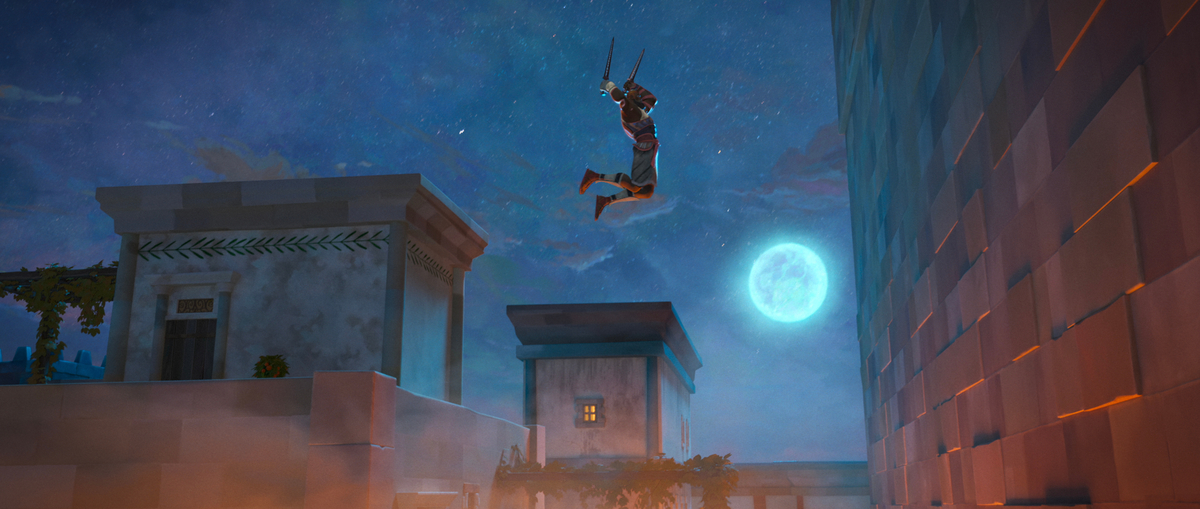
At the top, he finds Helen, wearing a necklace embedded with vibranium. Paris stands beside her. Memnon doesn’t strike. He seizes the artefact and urges them to flee. Mission accomplished.
But then Achilles appears. He sees Memnon standing there. Helen and Paris are escaping right under his nose. Suspicion takes root. Achilles believes the worst: that Memnon was never truly one of them, that the war only served as cover for his true purpose.
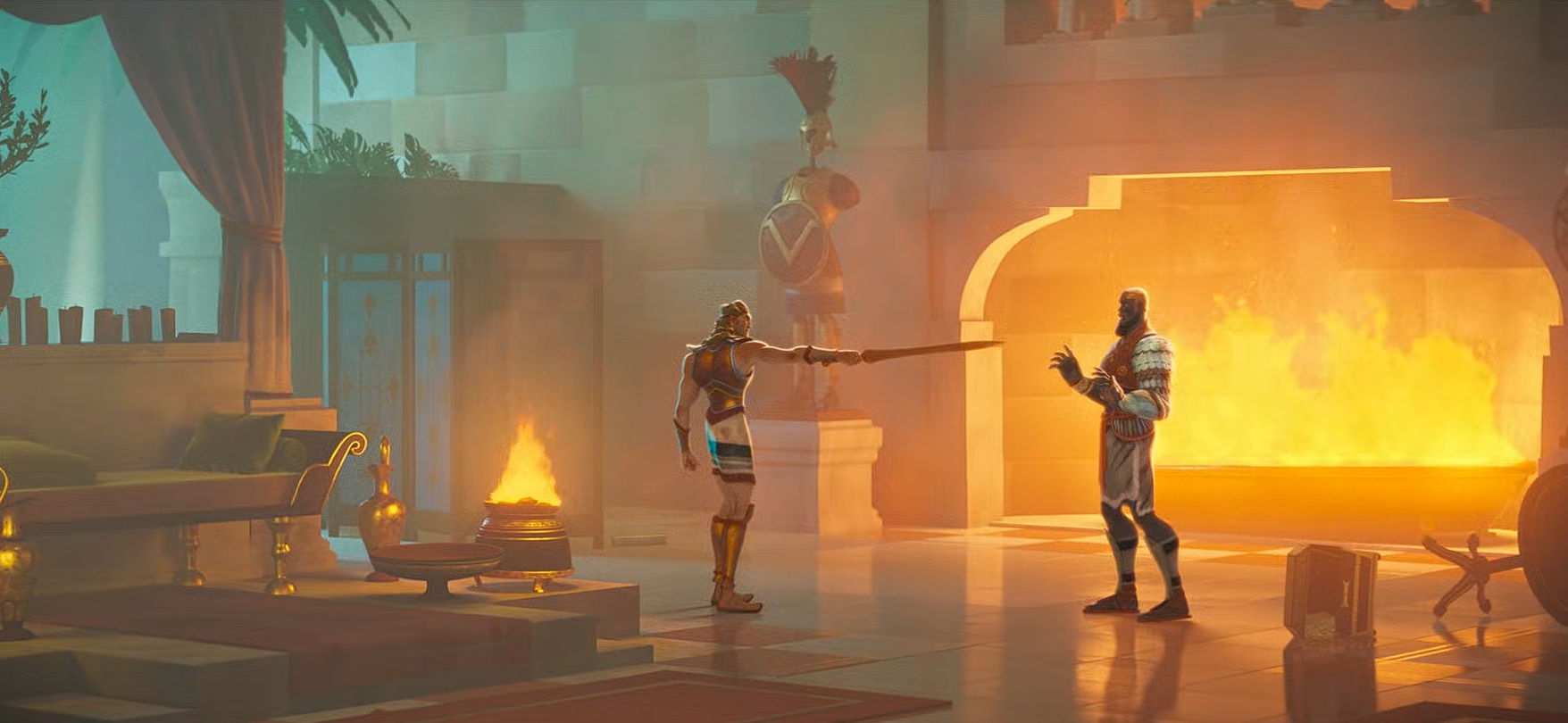
Memnon pleads for understanding, urging Achilles to finish the war and return home a hero. But Achilles refuses to listen. He accuses Memnon of chasing magic, of stealing for power. The two clash—once brothers, now enemies.
Steel slams against vibranium. Blood spills. In the end, Memnon slices Achilles’ heel, the fatal weakness. As Achilles lunges one final time, the blade turns in his grasp. Memnon catches it and drives it into Achilles’ belly.
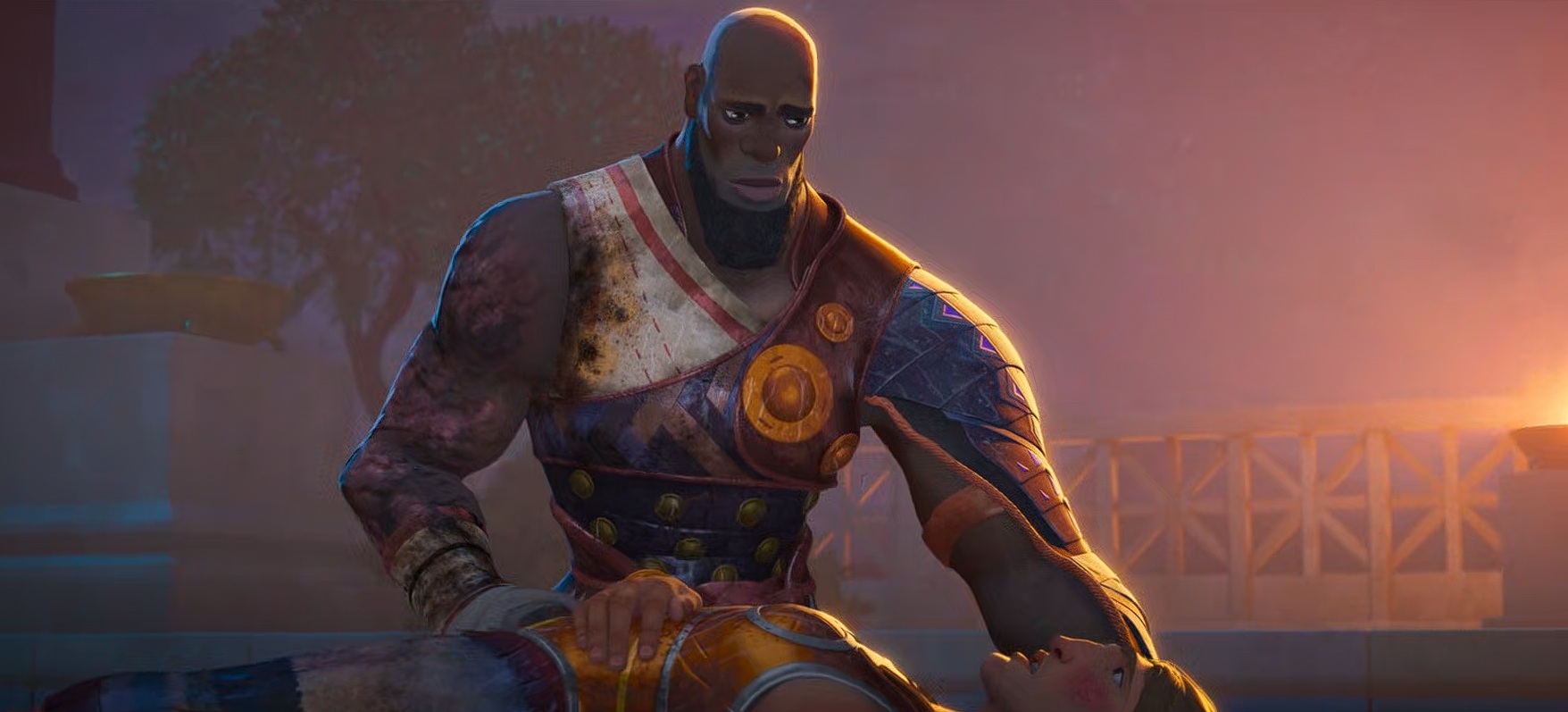
As Achilles bleeds out, he asks if it had all been a lie. Memnon says not everything was. Then, keeping his promise, he places two coins gently over his friend’s eyes as Achilles breathes his final breath.
Six months later, Memnon returns to Wakanda. They call him by his true name again. B’Kai. A cane now supports his step. In the Royal Archives, he meets Noni, now director. She reminds him that even if their work abroad demands false names and false lives, the experiences remain real.
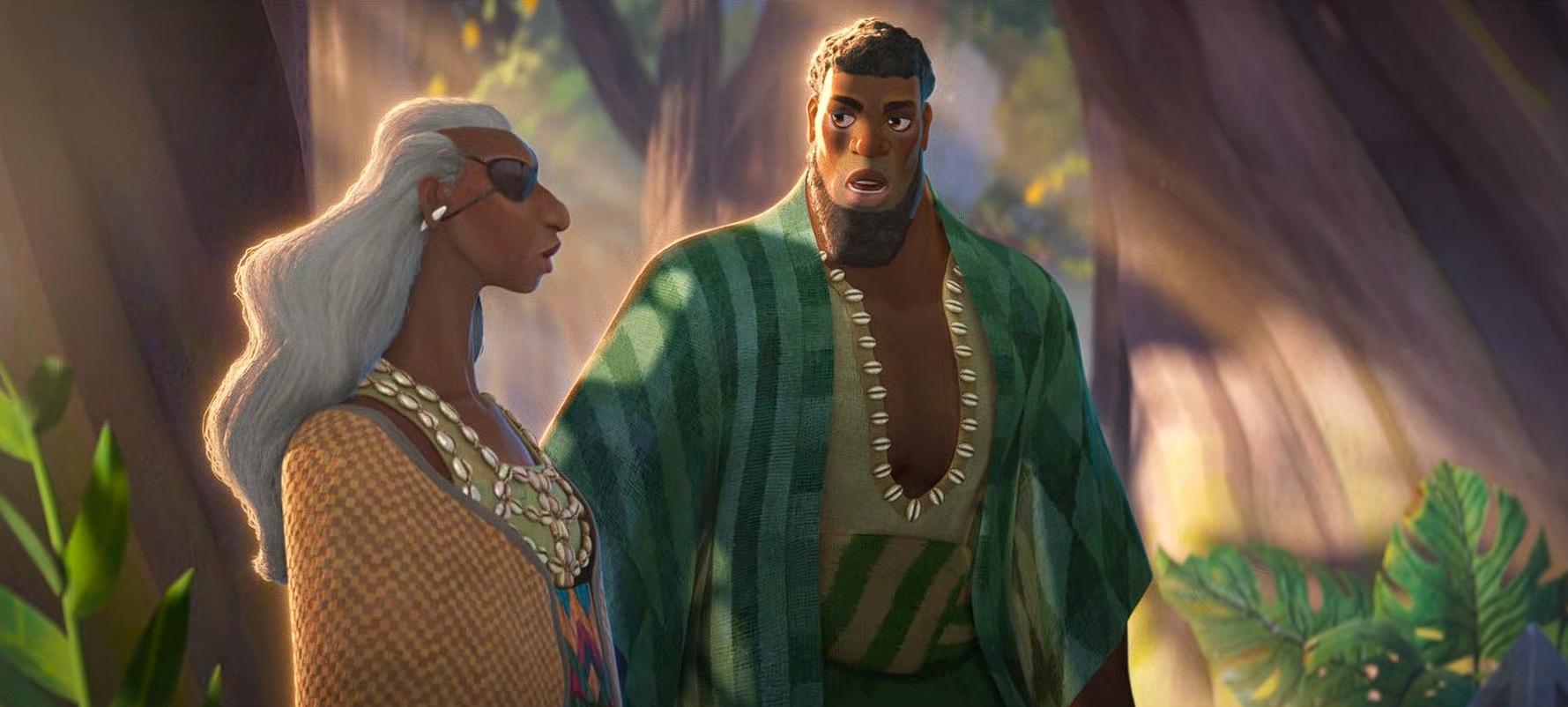
But Wakanda no longer feels like home. A decade away has changed him. The rhythm of life, once familiar, now feels distant. The fire he once had for duty flickers low. Still, he knows who he is—and what he wants. He asks to return to the field. Not for another mission, but to forge his path.
Episode 3: “Lost and Found”
The third tale in Eyes of Wakanda takes us to 15th-century China, where a War Dog named Basha embarks on what seems like a simple retrieval mission. Jovial and self-assured, Basha receives orders to extract a vibranium fragment embedded in an ancient stone dragon housed in a remote village. When he discovers the artefact fused directly into the sculpture, he chooses to take the entire piece rather than risk damaging the vibranium.

Back in Wakanda, Captain Ebo greets Basha upon his return. He had feared the worst, suspecting that a curse had silenced Basha, but a heavy snowstorm had simply blocked communication. Despite the reunion, Ebo senses something isn’t right. He questions whether Basha followed the mission’s parameters and whether his extraction stirred up unwanted attention.
The two head to the Artefact Centre to report their findings. High Councillor Rakim meets them with sharp criticism. He reminds Basha that the mission called only for the vibranium, not the entire statue. Basha defends his decision, explaining that separating the two in the field would have risked damaging the artefact, and possibly worse.
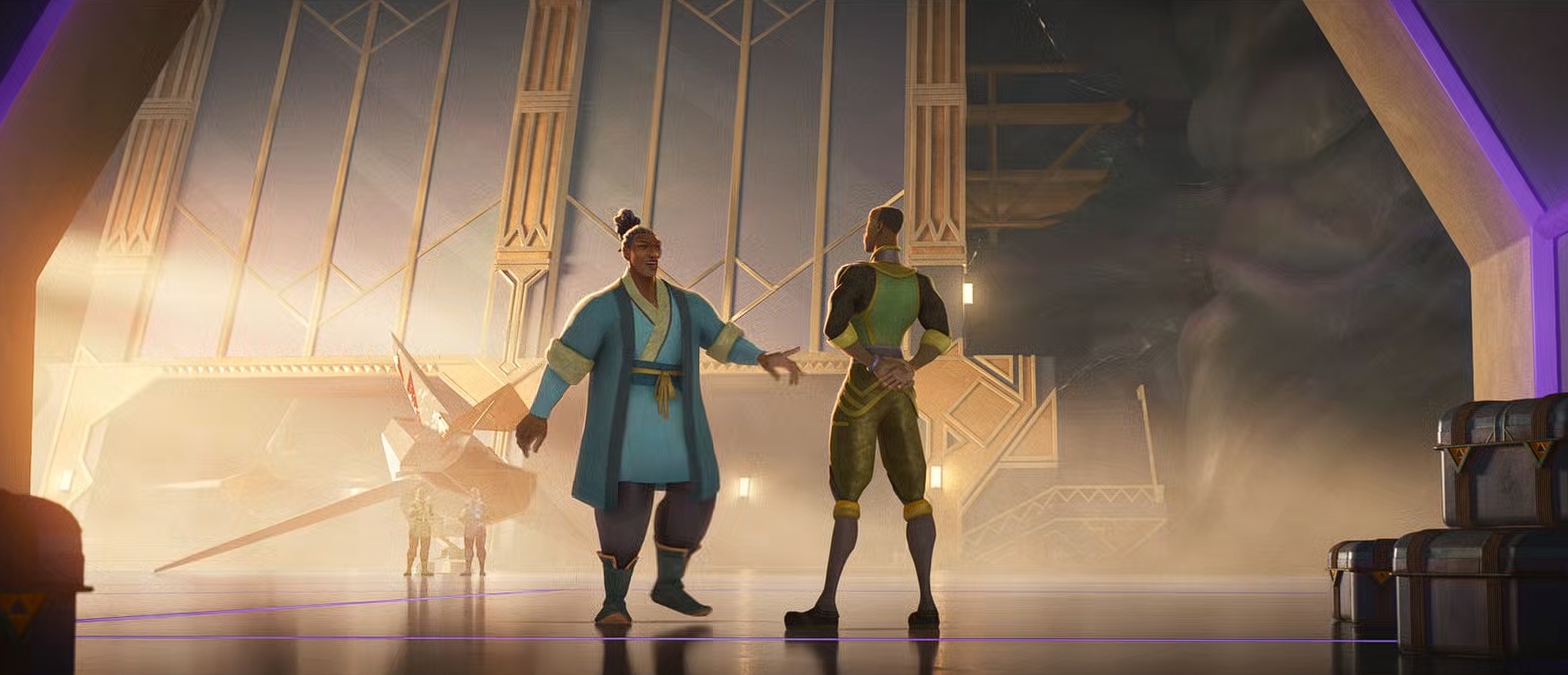
Their exchange is cut short when an alarm blares from Basha’s ship. A stowaway has triggered a security alert, and chaos quickly follows. The intruder escapes and soon confronts Ebo. She reveals herself as Jorani, an Iron Fist and protector of K’un-Lun. She easily outmanoeuvres Ebo and demands to know Basha’s whereabouts.
Ebo attempts to trap her in the cafeteria, but she fends off the Wakandans with ease and vanishes into the facility. Rakim, surveying the scene, puts the pieces together. The only way an outsider could have entered Wakanda unnoticed, he concludes, is by hiding aboard Basha’s ship.
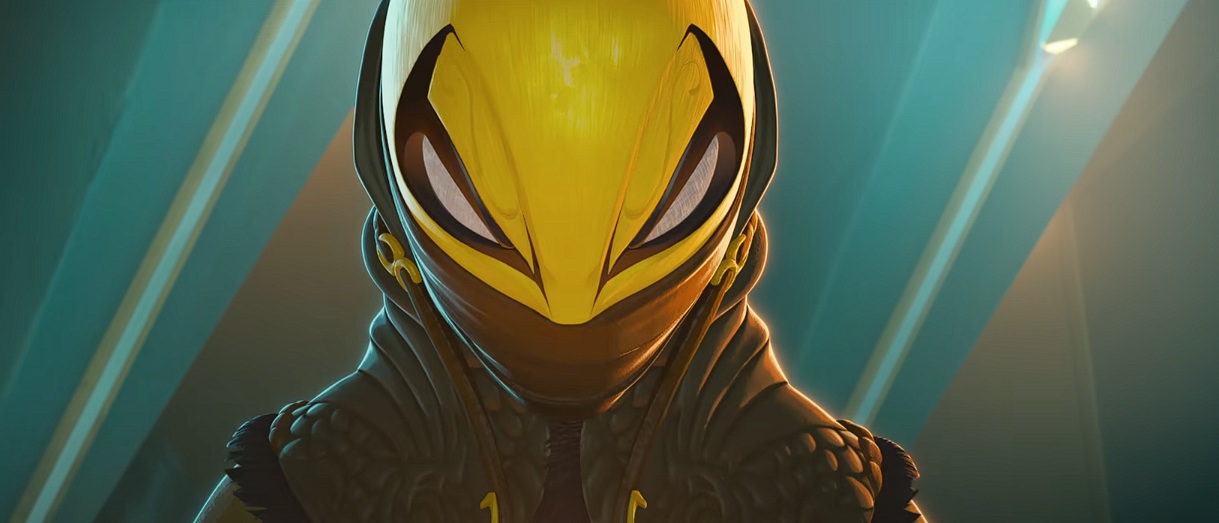
Hiding in a nearby corridor, Ebo urges Basha to confess. Basha, ever composed, believes they can still regain control. He sends Ebo to set off a diversionary alarm in the arsenal. Knowing the city’s underground passages better than anyone, Ebo slips into the shadows.
Meanwhile, Basha finds the Iron Fist. To his surprise, it’s Jorani, the kind villager who once sheltered him in China. Their relationship had grown close, perhaps even romantic, but now she stands against him. Jorani reveals that she’s on her own mission to take back the artefact that was stolen by Basha.
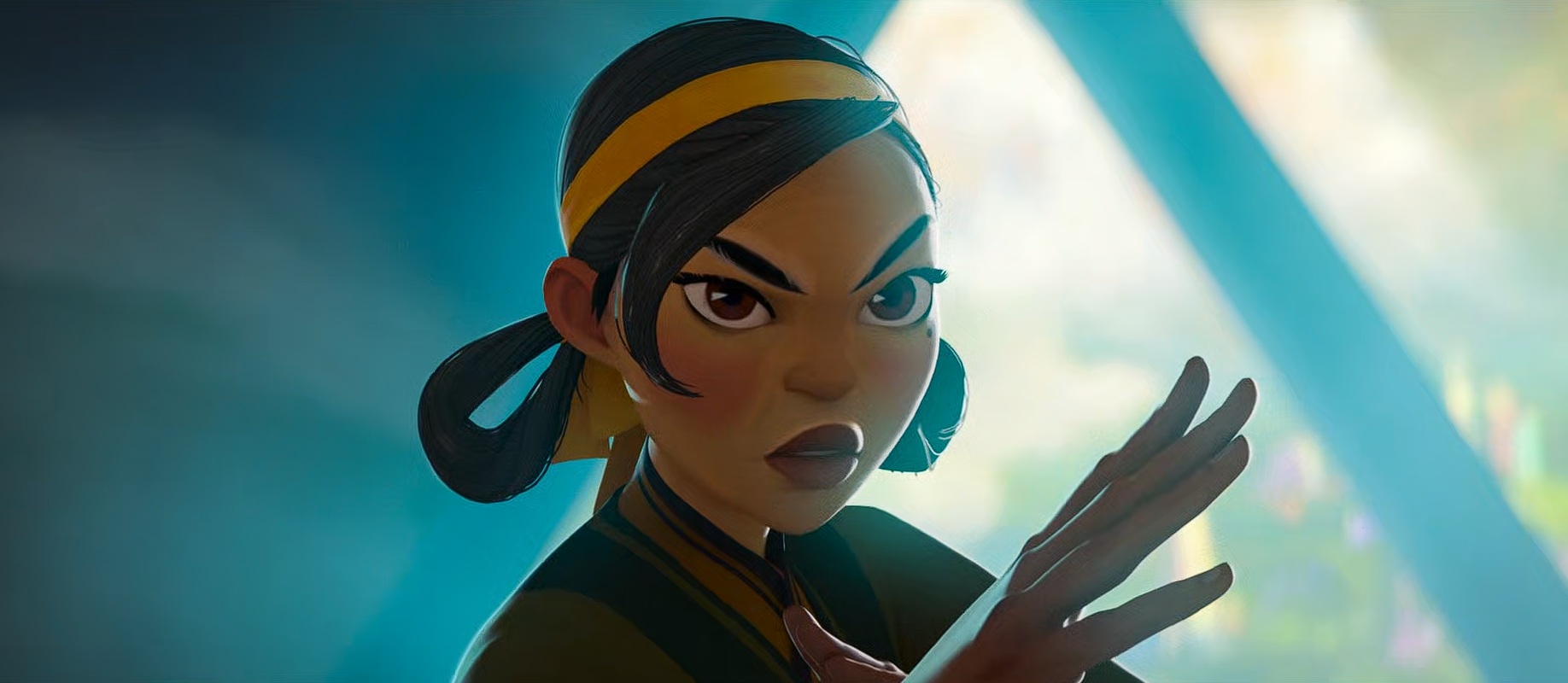
Upon learning the artefact rests in the Centre, she leaps onto a maglev train and speeds off. Basha follows, hoping to reason with her.
Inside the vault, Jorani is outraged. To her, Wakanda’s artefact chamber resembles a hall of stolen treasures. Basha tries to explain that the vibranium originated from Wakanda long ago. Jorani argues that the sculpture became sacred to her village over centuries, far more than just a vessel for metal.
Their argument turns into a fight. Basha avoids hurting her, instead using agility and wit to dodge attacks and slow her down. As their clash intensifies, Ebo returns. Sensing that force won’t resolve anything, Basha proposes they talk instead.

Jorani, moved by his sincerity, removes the vibranium shard from the statue and hands it to him. She vents her frustration, wishing he’d simply asked for it. Ebo stands stunned, recognising how far things escalated over a single, avoidable misunderstanding.
Before they can regroup, Rakim storms in. The ruined chamber stops him in his tracks. Thinking fast, Basha locks Jorani behind a sealed door and delivers a sudden punch to Ebo’s shoulder, then whispers for him to go along with the story. When Rakim demands answers, Basha claims it was all a surprise training scenario, designed by Captain Ebo to test War Dog readiness against elite outsiders.
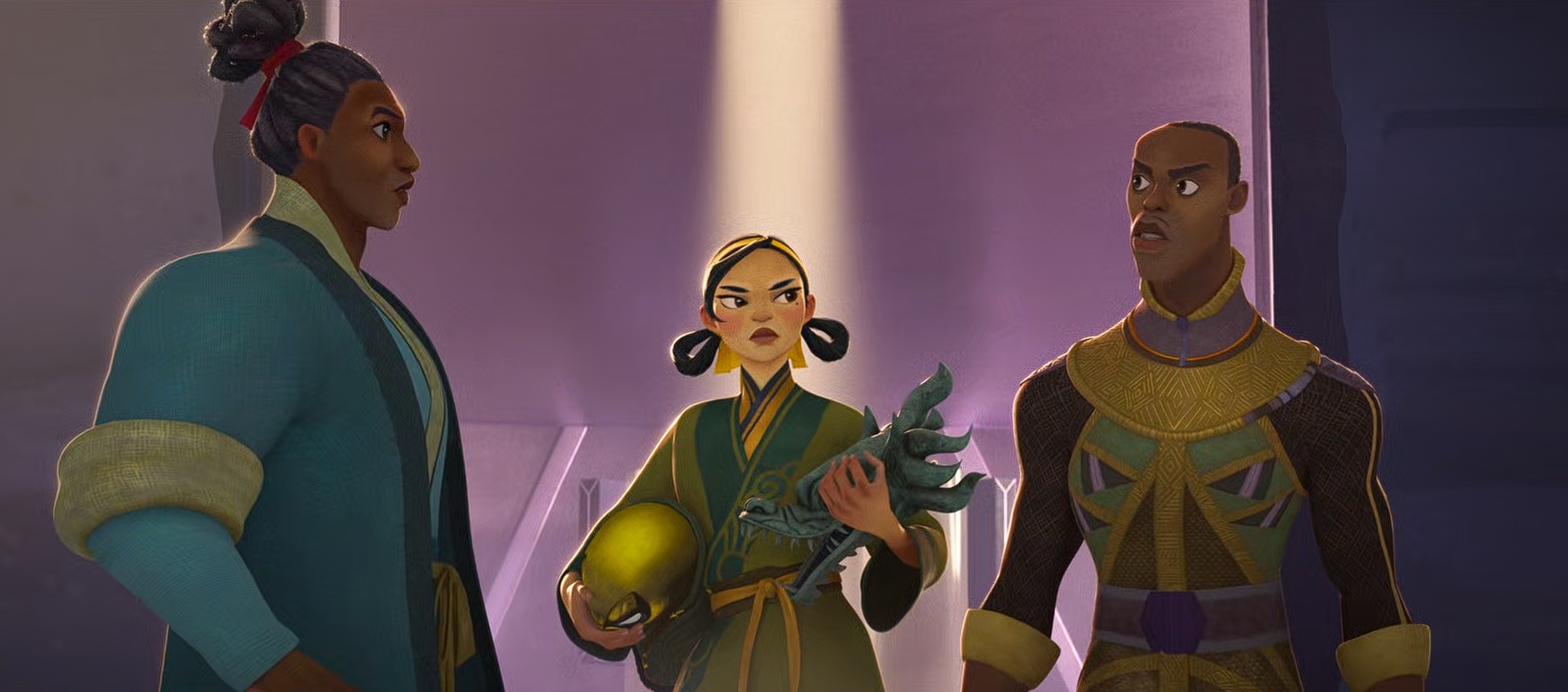
Without hesitation, Ebo plays along. Rakim, impressed by the initiative, commends Ebo and says he belongs in the field, not just behind a desk. He orders Basha to clean up the mess.
Later, Ebo secretly leads both Jorani and Basha through the underground tunnels and back to the ship.
Mission complete. Crisis averted. The day is saved.
Episode 4: “The Last Panther”
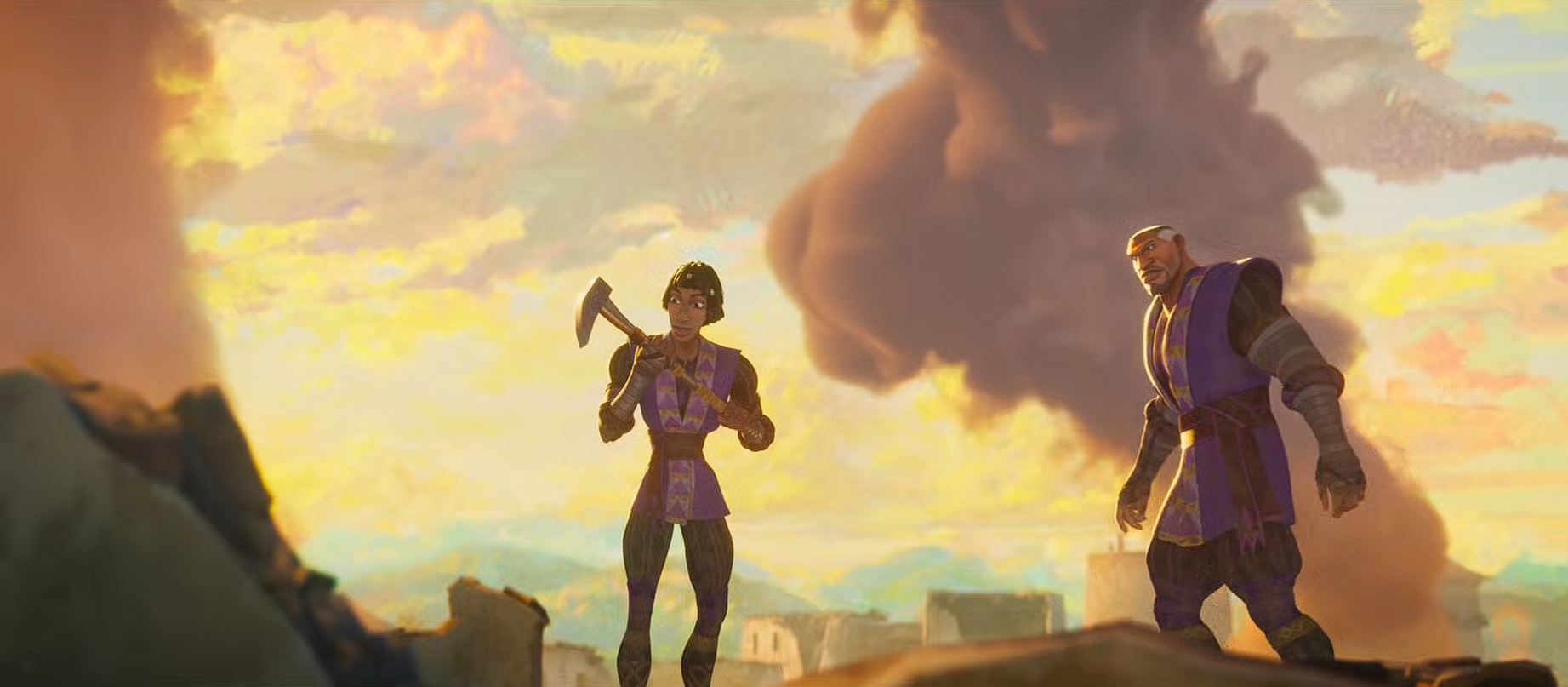
Set against the backdrop of the 1896 Battle of Adwa—a historic turning point in African resistance against European colonisation—the final episode follows Prince Tafari and Kuda, one of Wakanda’s seasoned War Dogs, on a covert mission to retrieve a vibranium artefact buried deep in the chaos of war. Though Tafari arrives only as an observer, sent by his royal parents, his eagerness to prove himself soon overrides protocol. Kuda urges him to abort the mission, but Tafari charges ahead with a reckless extraction plan. It works—but just barely.
Frustrated by the prince’s impulsiveness, Kuda scolds him for risking both the mission and his life. He even considers asking the director to reassign him away from royal “ride-alongs.” Tafari, equal parts apologetic and defiant, admits that his reckless hunger for glory led them to success—but any lesson in humility gets cut short.
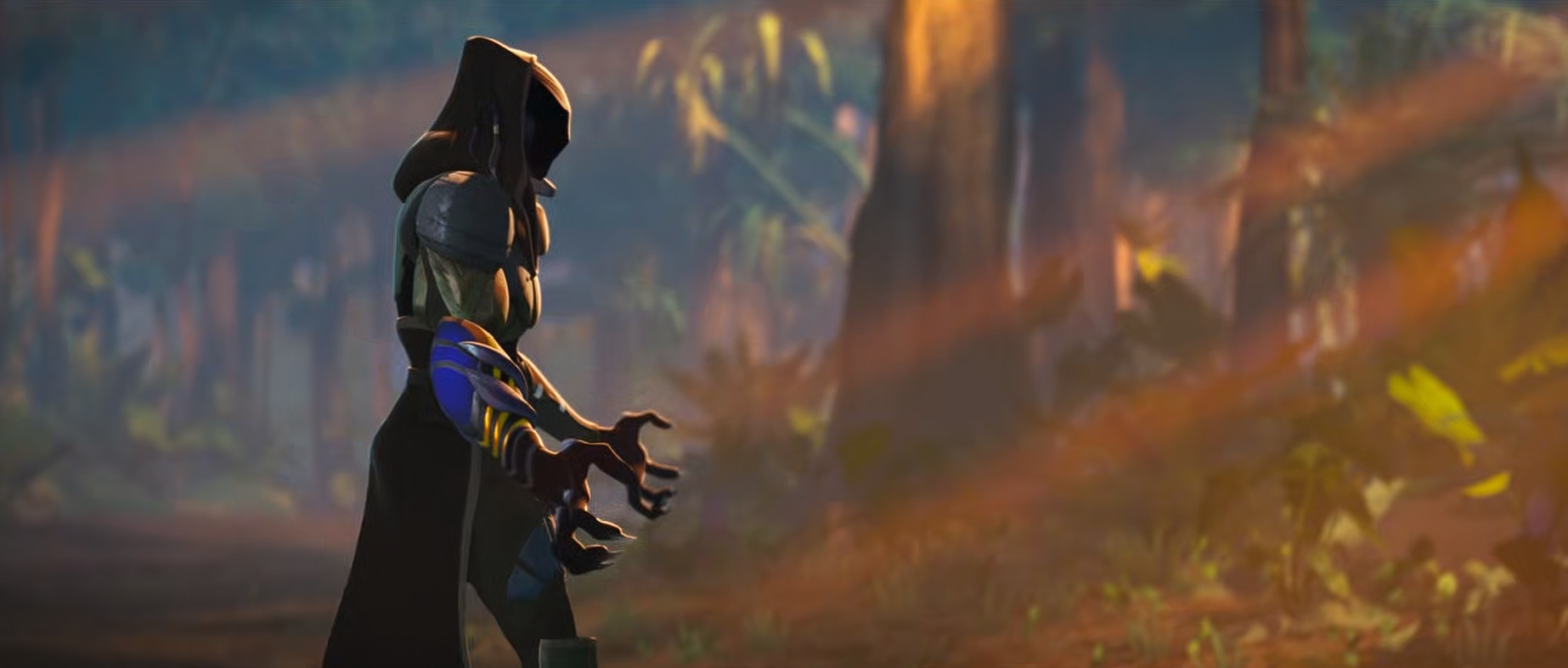
Suddenly, their transport flips—violently—slammed by an invisible force. Kuda leaps into action, activating his vibranium gauntlets in preparation for combat. The attacker reveals itself: not a ghost, but a figure in a sleek, hyper-advanced Panther suit unlike anything either of them has encountered. Their struggle over the vibranium pickaxe—the artefact they just secured—is interrupted by a voice. It speaks Wakandan.
The woman in the suit introduces herself as a Black Panther from the future. She halts the fight and explains that the fate of the world hinges on this exact moment. A holographic projection unfurls from her suit, revealing a shattered Earth 500 years ahead—devastated by an alien species known as the Horde. Even Wakanda, with all its advancements, lies in ruins. To change the outcome, she travelled back in time. Her journey pinpointed key historical flashpoints, one of which led her to the vibranium pickaxe.
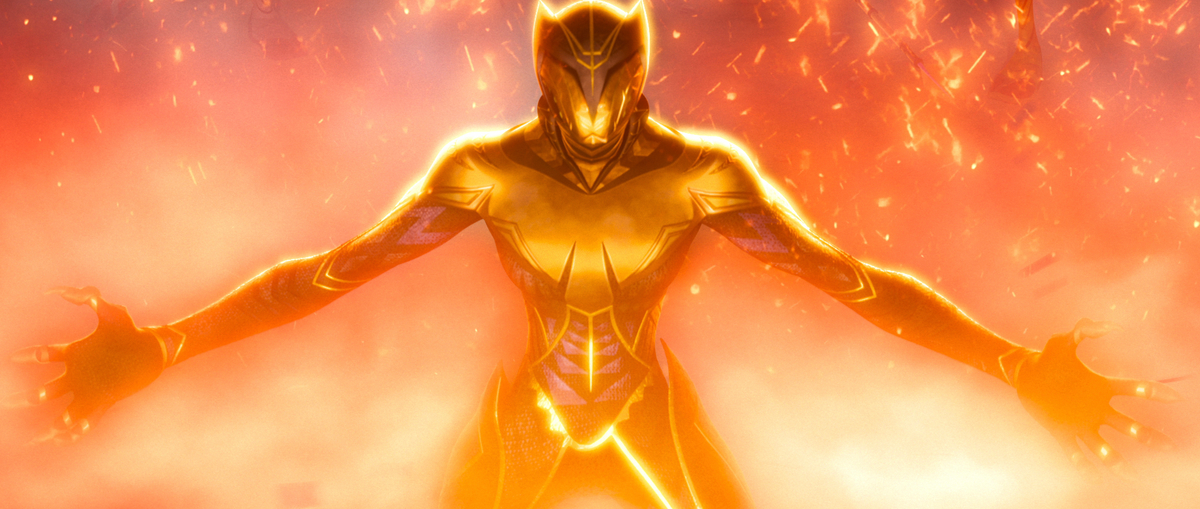
If the artefact stays in Wakanda, the world never unites in time to repel the Horde. But if it ends up in the London Museum, where Erik Killmonger eventually steals it in ‘Black Panther’ (2018), a crucial chain reaction begins: Killmonger’s challenge, T’Challa’s reawakening, and Wakanda’s decision to share its resources with the world. Only then does humanity stand a chance. In short, the future demands that the past remain unchanged.
Sceptical, Tafari asks for proof. The Panther replies cryptically: “The Queen has a fourth child.” Before either can respond, her suit loses power, dragging her back to the ruined future. There, the Dora Milaje make a final stand against the Horde, echoing the urgency of her warning.
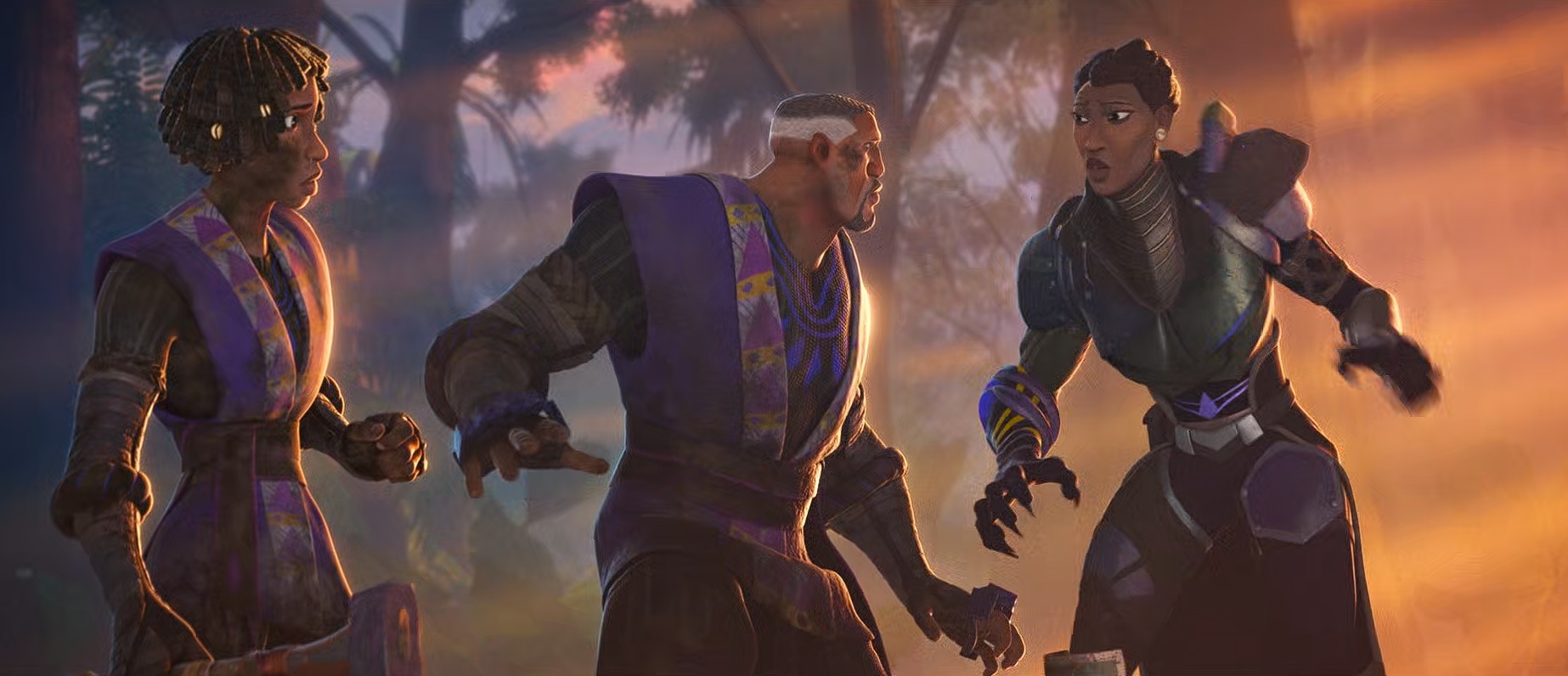
In the present, Kuda’s doubt fades when Tafari reveals his mother is, in fact, pregnant. Trusting the Panther’s vision, they resolve to return the artefact to its destined location. Along the way, rubble traps Kuda beneath collapsing stone. Tafari, no longer driven by glory but by responsibility, pushes forward and frees him.
When they return to Wakanda, the mission receives a verdict of “failure.” Tafari takes full responsibility, but his final words linger:
“I only wish I could live long enough to see what kind of future we saved.”
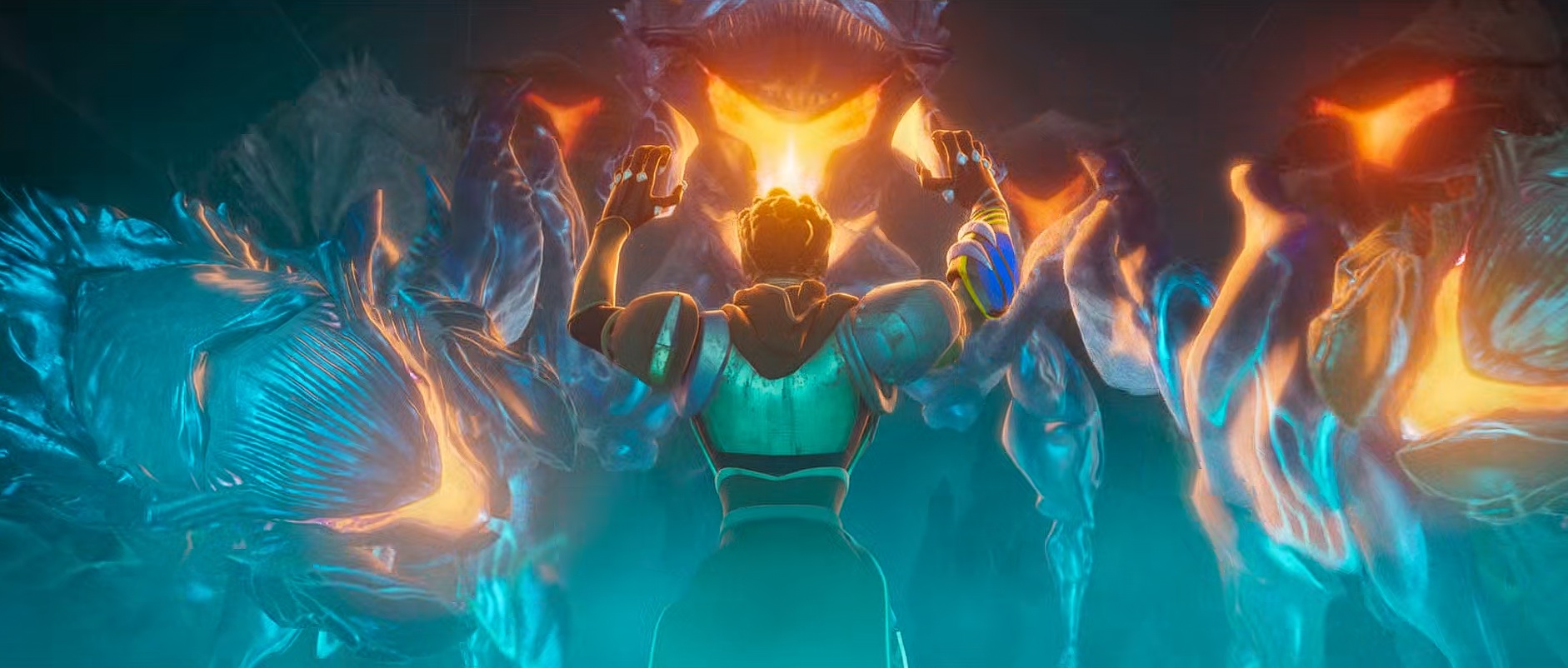
Bigger MCU Implications
Unlike Marvel’s other animated ventures like ‘X-Men ’97’ or ‘What If…?’, which explore alternate timelines and multiversal twists, ‘Eyes of Wakanda’ stays grounded in the sacred continuity of Earth-616. Acting as a prequel, the series threads untold Wakandan missions directly into the mainline MCU timeline, revealing that the legacy of the Wakandans stretches deeper and farther than we ever imagined.
And that brings us to the wider MCU canvas.
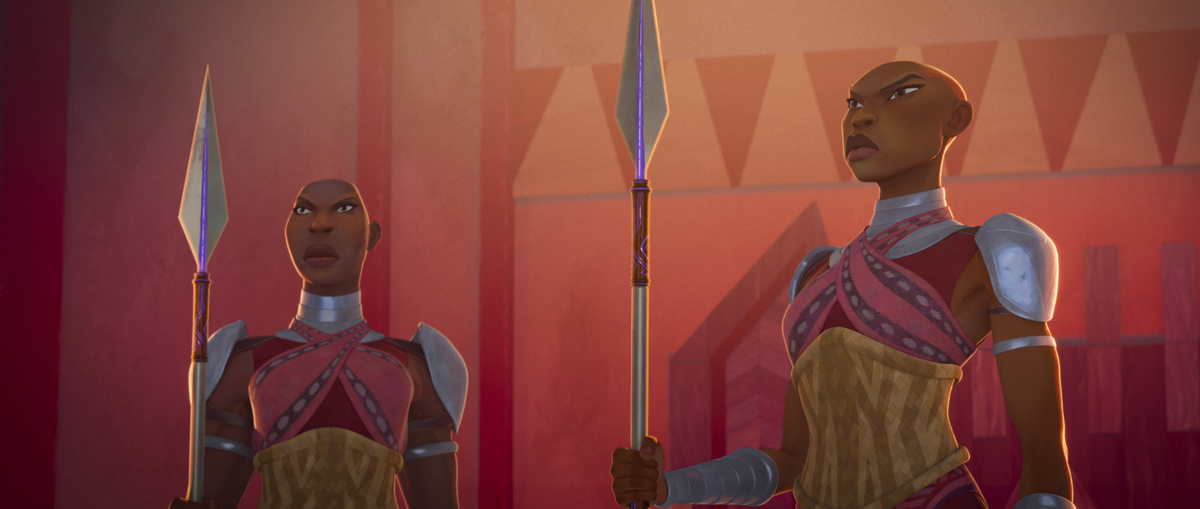
In its final episode, Eyes of Wakanda plays with time. Not in the branching-timeline logic of Endgame, but in a more past-influences-future, almost tragic way, reminiscent of Days of Future Past. History loops. Patterns repeat. And destinies converge.
Take N’Jadaka. The future Panther’s insistence that the artefact must end up in the London Museum is chilling. It’s a direct callback to ‘Black Panther’, where Erik Killmonger steals it to ignite his revolution. What once felt like a deeply personal act of vengeance now seems… ordained. Is Killmonger’s path part of a greater loop? Could his ideology hold deeper significance than we ever realised?
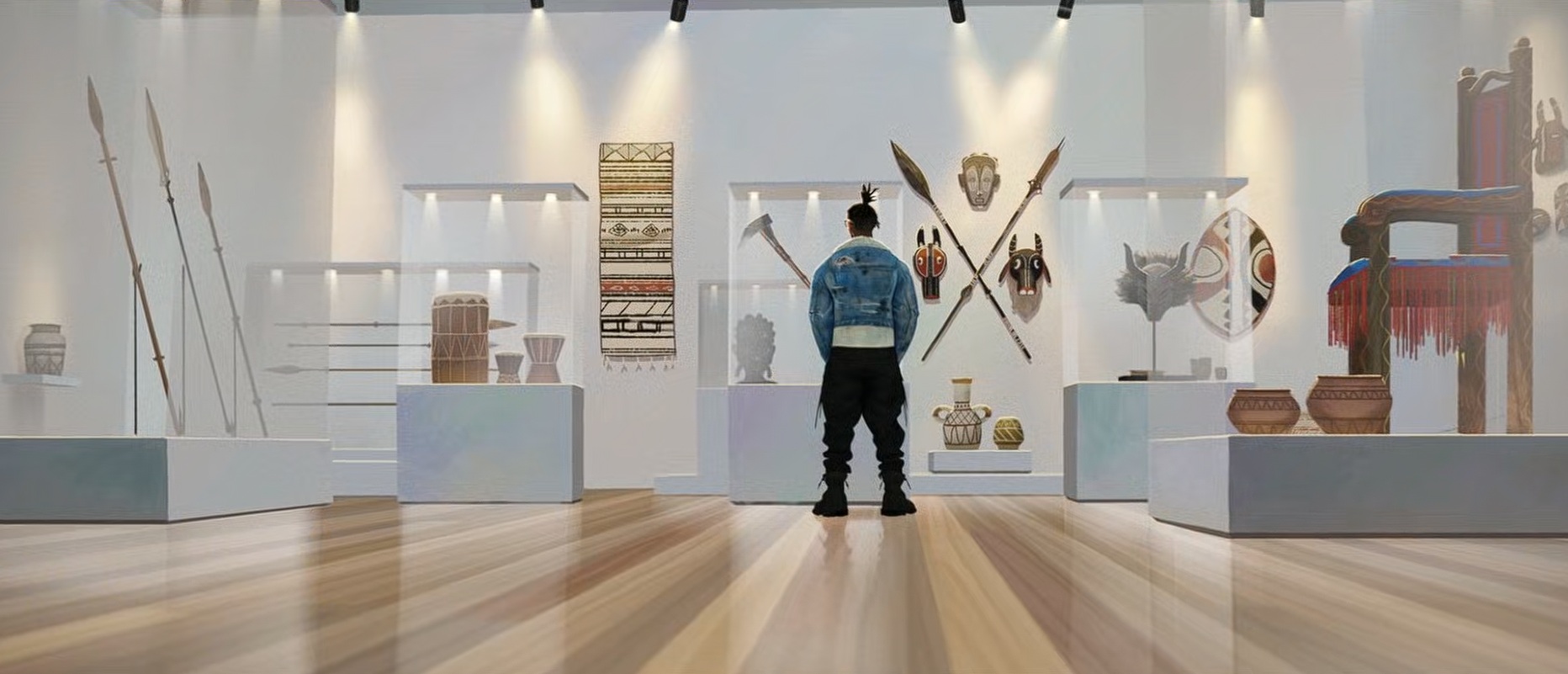
The show also reshapes our understanding of vibranium. It’s not just a super-metal. It’s portrayed as something closer to a constant of the cosmos, capable of influencing fate. That it ends up in ancient Troy, Qing-era China, and colonial battlefields suggests it’s been quietly steering the course of history long before Wakanda chose isolation.
How many War Dogs were scattered throughout time to retrieve the artefacts? How many artefacts remain hidden across the globe? At least now, thanks to King T’Challa’s broadened perspective, Wakanda is a little more open to the world itself, so there might be less of a question in Birmin Zana.
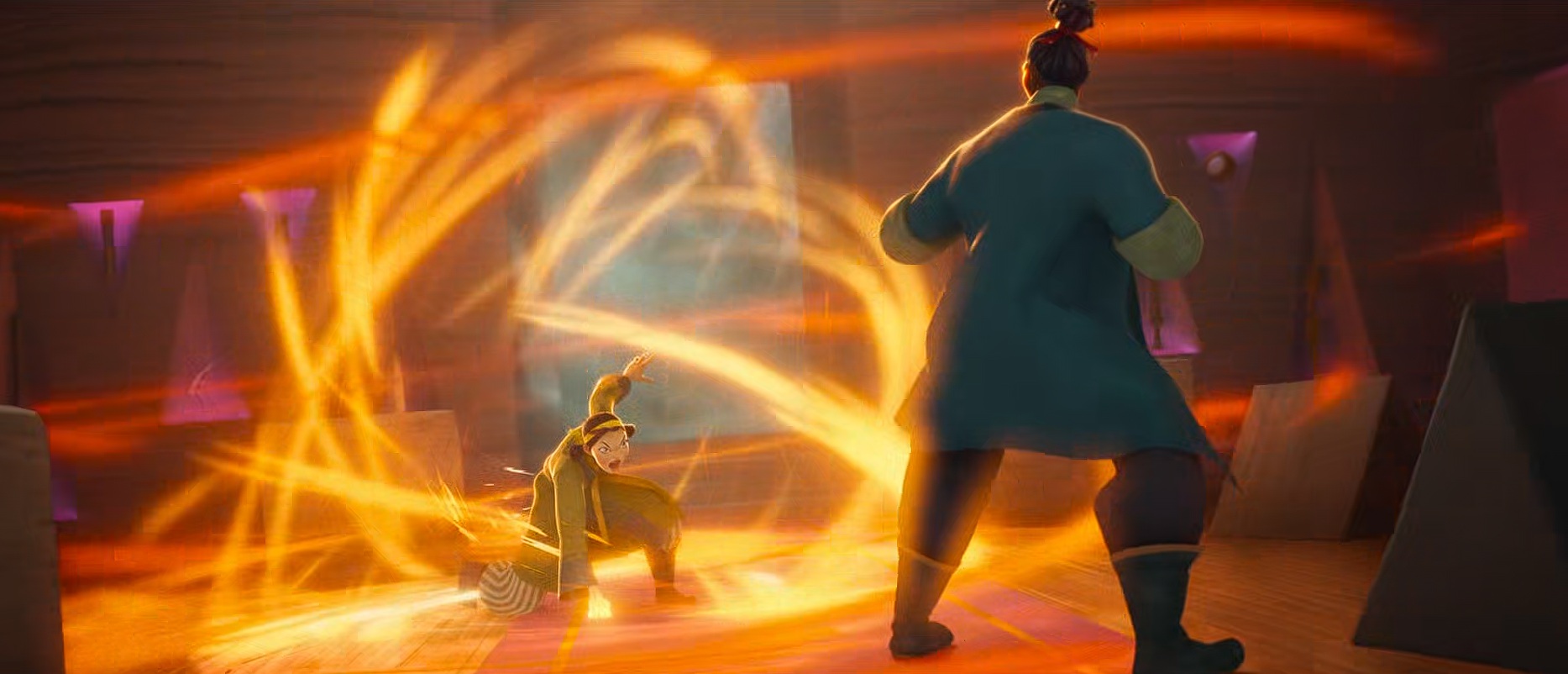
And then there’s the Iron Fist, smuggled onto Wakandan soil.
That twist alone is huge. It opens the door to K’un-Lun, perhaps even suggesting that the mysterious village from Episode 3 was K’un-Lun itself.
Yes, we’ve gotten the Netflix show before. While we still do not know the canonicity of that one, it does seem like Marvel is setting the stage for a main version like Danny Rand to return in the present day. Who knows, maybe Iron Fist could appear in a project like ‘Shang-Chi’, or reunite with his old pals in ‘Daredevil: Born Again’. And the possibilities it opens are thrilling. Because it’s high time that the Immortal Iron Fist, protector of Kun Lun, sworn enemy of The Hand, gets the respect he deserves!
Will there be a Season 2?

So… will there be a second season of Eyes of Wakanda? The honest answer is: no official word yet. Marvel has kept quiet, and given the show’s structure and conclusive tone, it could remain a one-off. But let’s be real, this is the MCU. Nothing ever truly ends, especially when you’re dealing with time travel, ancient artefacts, and a future Panther warning of apocalyptic collapse. So while season two isn’t confirmed… it wouldn’t be surprising if the eyes of Wakanda open again.

‘Eyes of Wakanda’ is currently streaming on Disney+ Hotstar Malaysia.

